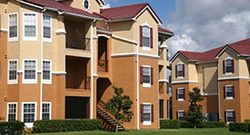The WPJ
THE WORLD PROPERTY JOURNALReal Estate Facts Not Fiction
Residential Real Estate News

U.S. Multifamily Market Shows Fifth Continued Quarterly Improvement
Residential News » Residential Real Estate Edition | By Michael Gerrity | December 8, 2011 2:06 PM ET
 Based on the National Association of Home Builders (NAHB) most recent Multifamily Production Index (MPI), a leading indicator for the multifamily market, shows a continued improvement for the fifth consecutive quarter for the U.S. apartment and condominium housing market.
Based on the National Association of Home Builders (NAHB) most recent Multifamily Production Index (MPI), a leading indicator for the multifamily market, shows a continued improvement for the fifth consecutive quarter for the U.S. apartment and condominium housing market.The MPI, which tracks the sentiment of builders and developers about the conditions of the multifamily market on a scale of 0 to 100, increased from 44.4 in the second quarter to 47.3 in the third quarter--the highest reading since the fourth quarter of 2005.
The index provides a composite measure of three key elements of the multifamily housing market: construction of low-rent units, market-rate rental units and "for-sale" units, or condominiums. The index and all of its components are scaled so that any number over 50 indicates that more respondents report conditions are improving than report conditions are getting worse. In the third quarter of 2011, the MPI component tracking builder and developer perceptions of market-rate rental properties recorded an all-time high of 63.8, while low-rent units remained steady at 50.1. For-sale units rose to 31.9, the highest recording since the second quarter of 2006.
"Multifamily construction continues to be the bright spot in the overall housing market," said NAHB Chief Economist David Crowe. "While household formations have been below trend, those who are forming new households are becoming renters and this trend is likely to continue until consumers' confidence returns."
"Apartments and condominiums play an integral role in the overall housing market, now more than ever," said Stillman Knight, chairman of NAHB's Multifamily Council Board of Trustees and president and CEO of the Knight Company of Alexandria, Va. "The construction of these units not only brings jobs to local communities, but also provides an adequate stock of housing for areas with rapid population growth."
Looking forward to the next six months, builder and developer expectations improved in the third quarter for market-rate rental properties and for-sale properties, up to 67.2 and 37.3, respectively. Expectations for low-rent units decreased slightly, to 50.2.
The Multifamily Vacancy Index (MVI), which measures the multifamily housing industry's perception of vacancies, decreased from 36.1 in the second quarter to 35.1 in the third quarter. With the MVI, lower numbers indicate fewer vacancies. The MVI has improved considerably since reaching a peak of 70.2 in the second quarter of 2009.
"NAHB's Multifamily Production Index and Multifamily Vacancy Index have emerged as leading indicators for the multifamily market," Crowe said. "For example, the MVI began to improve strongly in the third quarter of 2009, one quarter before a similar trend emerged in the Census Bureau's rental vacancy rate for buildings with at least five apartments. Although the Census shows a slight surge in rental vacancy rates in the latest quarter, our survey suggests that this will only be a temporary setback."
Sign Up Free | The WPJ Weekly Newsletter
Relevant real estate news.
Actionable market intelligence.
Right to your inbox every week.
Real Estate Listings Showcase
Related News Stories
Residential Real Estate Headlines
- More Americans Opting for Renting Over Homeownership in 2024
- BLOCKTITLE Global Property Tokenization Platform Announced
- Small Investors Quietly Reshaping the U.S. Housing Market in Late 2024
- Greater Miami Overall Residential Sales Dip 9 Percent in November
- U.S. Home Sales Enjoy Largest Annual Increase in 3 Years Post Presidential Election
- U.S. Housing Industry Reacts to the Federal Reserve's Late 2024 Rate Cut
- U.S. Home Builders Express Optimism for 2025
- Older Americans More Likely to Buy Disaster-Prone Homes
- NAR's 10 Top U.S. Housing Markets for 2025 Revealed
- U.S. Mortgage Delinquencies Continue to Rise in September
- U.S. Mortgage Rates Tick Down in Early December
- Post Trump Election, U.S. Homebuyer Sentiment Hits 3-Year High in November
- Global Listings Aims to Become the Future 'Amazon of Real Estate' Shopping Platform
- Greater Las Vegas Home Sales Jump 15 Percent in November
- Ultra Luxury Home Sales Globally Experience Slowdown in Q3
- World Property Exchange Announces Development Plan
- Hong Kong Housing Market to Reach Equilibrium in Late 2025
- Construction Job Openings in U.S. Down 40 Percent Annually in October
- U.S. Mortgage Applications Increase in Late October
- World Property Markets, World Property Media to Commence Industry Joint-Venture Funding Rounds in 2025
- New Home Sales Hit 2 Year Low in America
- U.S. Pending Home Sales Increase for Third Consecutive Month in October
- Pandemic-led Residential Rent Boom is Now Fizzling in the U.S.
- Emerging Global Real Estate Streamer WPC TV Expands Video Programming Lineup
- 1 in 5 Renters in America Entire Paycheck Used to Pay Monthly Rent in 2024
- U.S. Home Sales Jump 3.4 Percent in October
- Home Buyers Negotiation Power Grows Amid Cooling U.S. Market
- Canadian Home Sales Surge in October, Reaching a Two-Year High
- Greater Orlando Area Home Sales Continue to Slide in October
- U.S. Mortgage Credit Availability Increased in October
- U.S. Mortgage Rates Remain Stubbornly High Post Election, Rate Cuts
- Construction Input Prices Continue to Rise in October
- BETTER MLS: A New Agent and Broker Owned National Listings Platform Announced
- Home Prices Rise in 87 Percent of U.S. Metros in Q3
- Caribbean Islands Enjoying a New Era of Luxury Property Developments
- The World's First 'Global Listings Service' Announced
- Agent Commission Rates Continue to Slip Post NAR Settlement
- Market Share of First Time Home Buyers Hit Historic Low in U.S.
- Greater Palm Beach Area Residential Sales Drop 20 Percent Annually in September
- Mortgage Applications in U.S. Dip in Late October
Reader Poll
Marketplace Links
This website uses cookies to improve user experience. By using our website you consent in accordance with our Cookie Policy. Read More





